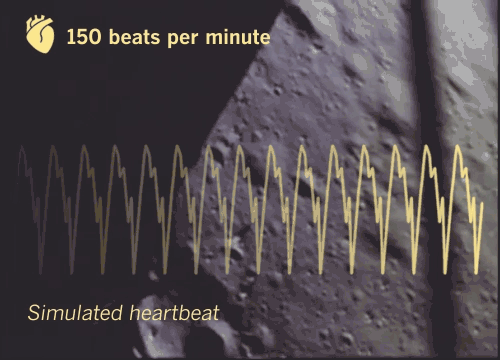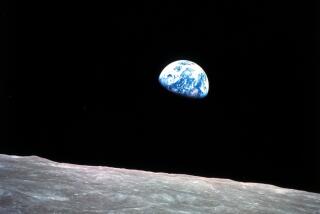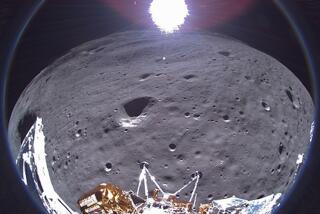Newsletter: Half a century ago, one giant leap for mankind
- Share via
It’s been 50 years since Apollo 11 astronauts Neil Armstrong and Buzz Aldrin set foot on the surface of the moon.
In this extra edition of the Today’s Headlines newsletter, the Los Angeles Times explores how the moon landing embodied American optimism as well as technical prowess, how women played a key but unheralded role in the effort and how NASA worked out the intricacies of the mission itself.
In 1969, our world was changed forever, not by war and chaos, but by a bold expression. A half-century later, the moon landing still resonates.
We choose to go to the moon in this decade and do the other things, not because they are easy, but because they are hard; because that goal will serve to organize and measure the best of our energies and skills, because that challenge is one that we are willing to accept, one we are unwilling to postpone, and one we intend to win, and the others too.
— President John F. Kennedy
The Apollo program’s stunning technical success depended on a culture of strong government leadership, industrial organization, a tolerance for risk and a political environment that do not exist today — even as NASA has insisted it will land humans on the moon in the next five years.
The three presidents of the lunar decade — John F. Kennedy, Lyndon B. Johnson and Richard Nixon — understood that the great adventure included great risks. Today? It might be a little more challenging.
Sign up for the Today’s Headlines newsletter.
Women of NASA
Many of the first women of NASA were lone pioneers, fighting behind the scenes not only to build their careers, but also to advance those of other women and minorities working at the space program.
One such woman has been honored with an innovative salute in a remote corner of the Mojave Desert. Google created a breathtaking portrait of unsung Apollo software pioneer Margaret Hamilton using moonlight reflected on 107,000 solar panel mirrors. Hamilton, now 82, led the team that developed the software for NASA’s manned Apollo missions.
In a Times video series, meet more of the female “computers,” engineers and scientists who made the moon landing a reality, like Poppy Northcutt, Christine Darden and Sheila Thibeault.
I tell parents, ‘Don’t let people tell you what your daughter can’t do.’
— Christine Darden, aeronautical engineer
The next time a pair of astronauts set foot on the moon, NASA has vowed that at least one of them will be a woman.
150 beats per minute
That was Armstrong’s heart rate when the Eagle lander he was piloting touched down on the moon. He spent years training for this moment ... but there was a last-minute twist. Listen to his heartbeat as he descended to the lunar surface.

“That’s one small step for man …” Think you know Armstrong’s famous words? He says we heard it wrong this whole time.
The early Apollo missions were focused on beating Soviet Russia to the moon. But by the time Apollo 11 blasted off, many of the astronauts had developed a deep appreciation for lunar geology, and the new light it would shed on our own planet.
‘Thank you, television’
A global audience of more than 500 million viewers tuned in for what was considered the greatest adventure in human history and the culmination of a national goal set by President Kennedy. Fifty years later, TV is still enamored of the Apollo 11 moonwalk. Here are just a few programs celebrating the anniversary.
The moon landing left a lasting impression on many of those who followed along, regardless of their age, background or where they were living. Readers have shared their memories of watching the event.
I glanced at my grandmother as she watched intently with her teary eyes, as there was a moment of silence. It was as if a miracle had just happened.
— Susan Nares, Los Angeles
Want to tell us yours? Email us at [email protected].
If you like this newsletter, please share it with friends. Comments or ideas?
More to Read
Sign up for Essential California
The most important California stories and recommendations in your inbox every morning.
You may occasionally receive promotional content from the Los Angeles Times.











